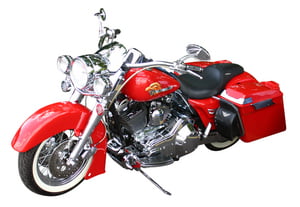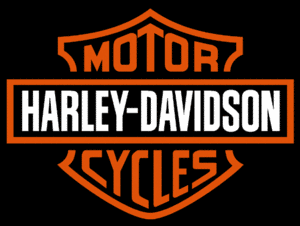Riders ride, but not recently.
Unfortunately, the surging costs of new motorcycles are leaving many motorcycle riders on the side of the road. Instead they turn to driving their four-wheel family-wagons, unable to feel the wind on their face and experience the thrills of traveling down the open road.
However, many other riders have turned to purchasing used motorcycles instead. Buying used means you can save money by selecting a motorcycle similar to the one you planned to buy new. For example, you could pay a good price for a brand-new 2011 Harley-Davidson Sportster 1200 or save some funds by going with a 2009 or a 2008 or even a 2007.
Perhaps you could buy a larger used motorcycle, for example. You go after a used full Harley-Davidson bagger when you really can only afford new Sportster 883.
Maybe you will buy motorcycles that are old enough to allow you to ride more than just one, just not at the same time.
For whatever the reason you have to buy used, here are tips to use when buying a used motorcycle. I’ve learned from the mistakes I’ve made during my 20-plus years of riding motorcycles.
Check around on prices
Make sure you compare prices online, in your local motorcycle trader magazine and at Kelly Blue Book to make sure you get a range of prices for the motorcycle you are considering purchasing. You don’t want to pay too much when you buy a used motorcycle, do you?
Check the appearance
This appears simple enough, but too many riders become overjoyed at the first sight of a potential new ride that they fail to see obvious problems. If the used motorcycle you want to purchase looks like it was rode hard and put away wet, it probably was. Dings, scratches, and tiny rusts spots indicate a bike that was abused. Make sure you discount enough off of the price to make up for any unforeseen repairs you’ll have to make on your new, used motorcycle.
Check underneath the footpegs
Motorcyclists somehow always forget to replace the footpegs when repairing damage to a bike that fell over. They replace they handlebar grip stops, but somehow never manage to check underneath the footpegs for damage. If a used motorcycle looks too clean to be true, check the underside for damage that was missed in an accident repair.
Check the Owner
In some cases, people treat their motorcycles better than they treat themselves. In many other cases, it’s about the same. Chances are that if the person who is selling a used motorcycle to you cared little for his motorcycle if he appears to care little about his health, appearance and well-being,
Find Out Why?
Remember, the owner is selling the bike and its usually for a good reason. You need to find out why because then you will have a negotiating tool that you can use to get him to lower the price. Is he selling the bike to pay for his kid’s braces? Could be. Maybe, however, he wants to save on the cost of an engine rebuild. Insurance costs too high? Maybe. However, he could be facing jail time over speeding tickets because he red-lined the bike every time the traffic signal turned green.
Check the Tires for Uneven Wear
Be weary if the used motorcycle you are looking at has brand new tires. A bike that’s been put down a few times could have a bent frame that would show up in uneven tire wear.
Ride it
Remember its your money your giving up when you buy a used motorcycle. If the seller wants your money, make him let you ride it. Motorcycles are all about feel and there are things you won’t feel while he starts it up and you just stand there. If he wants your money bad enough, he will let you ride it.
Make sure the used motorcycle you are looking at starts easily, accelerates smoothly. Make sure second gear shifts smoothly because this tends to be the gear the goes first in a motorcycle transmission. Make sure the motorcycle does pull to the left or the ride and feel for any looseness in the handlebar while your ride. Check out the brakes to make sure there is no pulling, grabbing or fading when you stop. Finally, feel for any wobbles in the tires that could indicate a bad bearing or axle.
Start it Cold
Feel the used motorcycle you are looking at to make sure its cold when you go to start it. A warm bike will hide a lot of problems that only surface when its cold, such as a bad carburetor or a poorly performing electrical system. Listen for a miss, abnormal rumble or a any unusual clings or noises. These are all telling signs of problems down the road.
Check Headlights
A dim headlight while a motorcycle is running tells the story of a poor charging electrical system that can get expensive. Noticing this will help you lower the negotiating cost of the used motorcycle you are looking to buy.
Check Underneath for Leaks
This sounds simple enough except when you realize the person selling you a used motorcycle probably parked it somewhere else overnight so you wouldn’t see oil stains underneath it.
Go With Your Gut Feeling
Business decisions are made with the mind and buying decisions are made with the heart. However, your gut feeling is the most important. If a used motorcycle feels like a good deal in your gut, then it probably is. Don’t fall in love with a used motorcycle because you may have to walk away from it. Also, don’t buy a used motorcycle based just on price because you will end up getting a machine that you are never really attached to. Remember, some guys love their motorcycles more than their women.



